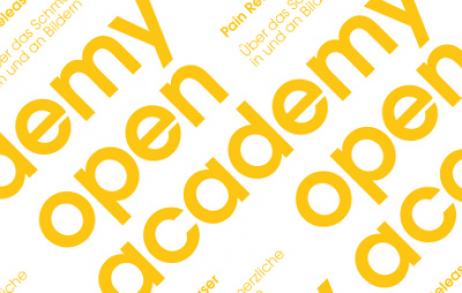Newsletter Search 



 Deutsch
Deutsch
11.01.–25.01.2011
Lectures/Events
Admission is free.
Why there is an end to mourning,
just not in images
Tuesday, January 11, 2011, 7 p.m.
Mourning and Melancholia is the title of an essay written by Sigmund Freud in 1917. It describes forms of melancholia and painful emotionalism. Melancholia, which is historically connected to the image of an artist, is what the psychoanalyst considers a disease pattern, whereas mourning is a reaction to processing loss, which can be fulfilled and completed. But is that really possible? Isn’t it the images themselves that forever remind us of states of loss?
Advancement is blinding and painful
Tuesday, January 18, 2011, 7 p.m.
Knowledge is often described using metaphors of seeing and light. We celebrate insight, illumination, clarity, enlightenment, etc. Based on this, the opposite of knowledge is blindness or derangement. The way out is that of glare. This, for example, is how Plato describes knowledge, as a painful treatment of the eyes. But how is the way out of darkness depicted in contemporary images? The example for this comes from Hollywood.
Desperate cry for help or cautious silence?
Tuesday, January 25, 2011, 7 p.m.
How does pain actually express itself? We know images of desperation and confusion, gestures of tension, illness and troublesome burdens. In the 18th century discretion, temperance, and cautious depictions of pain were required for art exhibitions. Today, contemporary images and media outdo each other in showing the dramatic, shocking, and horrific. A brief history of painful destiny from Winckelmann and Lessing to Pablo Picasso and Desert Storm.
Pain is an inner violence, an overwhelming burden, an abyss that gapes within oneself. Pain destroys the unity experienced by humans, which remains transparent as long as they feel healthy and can rely on their strength. The everyday assumptions about ourselves become brittle, the connection to the world precarious. Health, one could say, is a sort of non-experience, the benevolent silence of the organs. In pain they begin to speak. Pain gives you the feeling of suffocating on their immediacy.
Meanwhile, images have been connected with the idea of pleasure since time immemorial. They are used for relaxation and sometimes even therapy. Images should instruct and delight, according to the Roman poet Horace. But aren’t images also witnesses to absence, mourning, and loss? In the same breath, as we summon pleasant impressions through illusory depiction, they slip from our covetous grasp. Images allow the emergence of fissures in the world. We muster longing, lust, and nostalgia to make this withdrawal bearable. We experience this double movement of our mind, which longs to be disappointed, and deludes to long, when we look upon photos of people or things we love. But it is not only there that we become aware of the inaccessibility of what is lost and almost forgotten. All images stir up a contradictory feeling. They free us from difficulties (pain reliever) and, at the same time, set them free (pain releaser).
The three lectures told exemplary stories about ideas of loss in and around images. Antiquity and more recent philosophies, historical paintings, photographs, Hollywood and more serious films were addressed.
Lecturer: Thomas D. Trummer is an art historian and curator. He has been the curator of fine arts at the Siemens Stiftung in Munich since 2007. Prior to this he was the curator at the Belvedere in Vienna and a visiting curator at the Graz Kunstverein. Thomas Trummer has published numerous works on contemporary art and aesthetics.
